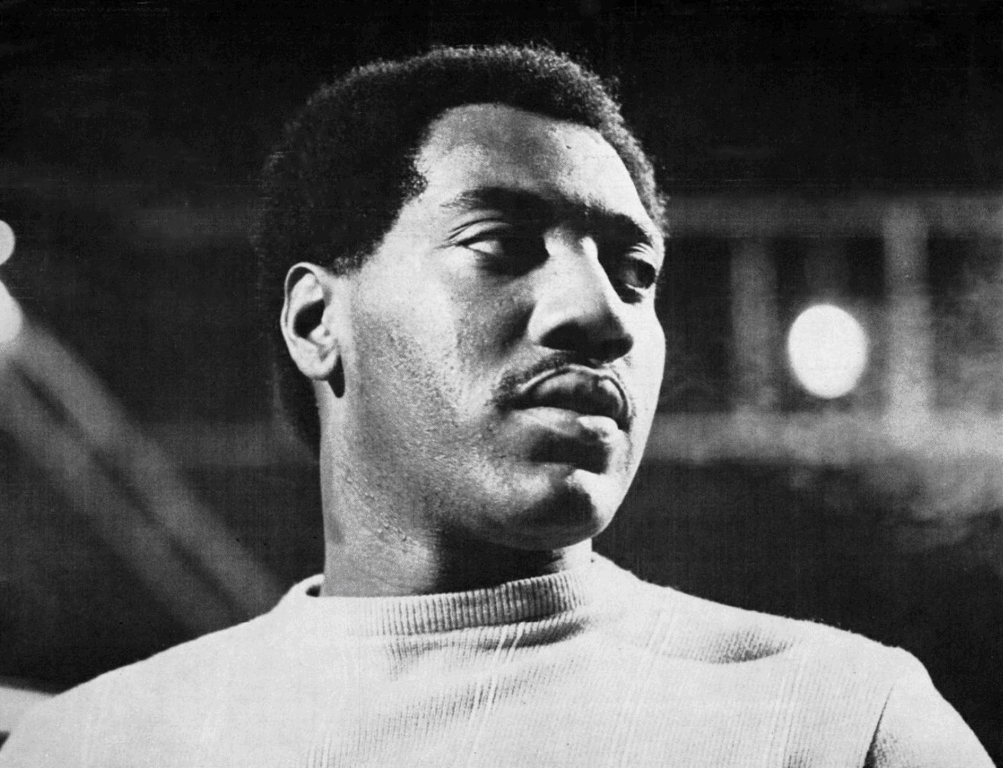Few musicians in history have been industry game-changers to the degree that Otis Redding was. And he barely made it past the age of 25. The soul singer seems to have impressed everyone who heard him; decades after his death, his popularity is as great as ever.
Born in 1941 to a family of Georgia sharecroppers, Redding sang and played piano as a kid, even bringing in a little money every Sunday by performing gospel on the local radio station. After winning a weekly talent contest 15 times in a row, he landed a job singing with a band called Pat T. Cake and the Mighty Panthers, who toured the Chitlin’ Circuit, a network of venues where African American artists were allowed to perform. When Redding’s longtime friend, guitarist Johnny Jenkins, quit the band, Redding cast around for new opportunities too.
It was when he drove Jenkins down to Stax Studios in Memphis for a session gig that Redding was discovered and signed by studio chief Jim Stewart. Over time, the single from their original sessions, “These Arms of Mine,” ended up being one of his best-selling songs. It became part of his first album, Pain in My Heart, a 1964 release on the new Volt Records, owned by Stax. Redding immediately demonstrated his ear for suitable cover material. Pain in My Heart included songs like Ben E. King’s “Stand by Me” and Little Richard’s “Lucille.”
In fact, Stax’s Stewart had originally complained that Redding sounded too much like Little Richard, and you can hear the singer’s devotion to that charismatic performer in his version of “Lucille.” He’s got that simultaneous growl and falsetto down pat, not to mention the wild energy.
One huge advantage for any artist working with Stax was the constant access to some of the best studio musicians in the country. For The Great Otis Redding Sings Soul Ballads (1965), Stewart surrounded Redding with Booker T. & The M.G.s plus the Memphis Horns; historians believe Isaac Hayes played piano, uncredited (he is listed on later albums). The single “Mr. Pitiful” was Redding’s first top 10 hit. That tune is historically noteworthy because it inspired engineer Tom Dowd to install an Ampex stereo mixer in the studio. Dowd was an innovator in multi-track recording who engineered hit albums by artists ranging from Aretha Franklin and Charles Mingus to the Bee Gees and Primal Scream.
As with the previous album, most of the tracks are covers. However, Redding was stretching his wings as a songwriter. “I Want to Thank You” milks that horn section for everything it can contribute, filling the gaps between phrases with tight harmony. As for Redding, he uses a style of delivery that brings singing closer to the natural rhythm of speech.
Redding was not one to linger painfully over the creation of his recordings. Most of his third album, Otis Blue: Otis Redding Sings Soul (1965) was laid down in a single day in 1964. And it reached the top of the R&B chart anyway. The lineup of musicians is nearly identical to the previous album.
As usual, there are some fun covers here, mostly drawn from the expected soul and R&B sources, such as B.B. King’s “Rock Me Baby.” But Redding surely surprised everyone when he decided to record The Rolling Stones song “Satisfaction.” While the brass blats snidely, Redding shows the true madness behind the lyrics; the single hit No. 4 on the R&B charts.
But at its heart, this album is a tribute to Sam Cooke. Cooke, one of Redding’s greatest inspirations, was shot to death at the age of 33 a few months before Otis Blue was made. Redding included several of Cooke’s songs on Otis Blue, as he had on his previous albums. One of those is the powerful anthem “A Change Is Gonna Come.” This is a heartbreaking rendition. That’s Wayne Jackson on trumpet and Steve Cropper on guitar.
Redding’s success won him unprecedented clout at Stax; the label’s co-founder, Phil Walden, gave the singer part ownership in two related production companies, Jotis Records and Redwal Music (note the fragments of Redding’s name in each). But that didn’t slow him down in the studio. The Soul Album came out in 1966. Ironically, its only single, “Just One More Day,” did not reach the top 10.
Among the most interesting tracks on this album is a 1923 song by vaudeville star James Cox. “Nobody Knows You (When You’re Down and Out)” deals with how easy it is to lose everything you’ve worked for and built in life. It’s a timeless message, as this aching, bluesy arrangement proves.
Another Depression-era song turned into one of Redding’s most celebrated tracks. “Try a Little Tenderness,” included on his 1966 album Complete & Unbelievable: The Otis Redding Dictionary of Soul, was composed in 1932. Up to Redding’s time, it was best known in a Bing Crosby recording from 1933.
Always on the lookout for great material, Redding was as open to the new as he was to the old. That same album includes his cover of Lennon/McCartney’s “Day Tripper,” which he turns into a ruthlessly James Brown-style romp, partly thanks to Booker T. Jones’ screaming organ chords.
No one could have guessed that King & Queen (1967) would be the final studio album of Redding’s life. This collaboration with Carla Thomas, known as the Queen of Memphis Soul (hence the album title), was a smash, hitting the No. 5 spot on the Billboard Pop chart. While the song “Tramp” outsold the other singles, it’s “Knock on Wood” that is best remembered today.
Bert Berns, who wrote such hits as “Twist and Shout,” “Another Piece of My Heart,” and “Hang on Sloopy,” composed the song “Are You Lonely for Me, Baby?” Thomas’ and Redding’s voice blend together seamlessly.
On December 10, 1967, the plane carrying Redding and members of the Bar-Kays R&B band crashed on its way to Madison, Wisconsin. The only survivor was Ben Cauley, the Bar-Kays’ trumpeter. A few days before, Redding had recorded what would become his signature hit, although he wouldn’t live to enjoy the accolades: “Sittin’ on the Dock of the Bay” was presented to the world in 1968, first as a single and then on one of several posthumous albums containing mostly unreleased material.
While the title track of The Dock of the Bay (1968) represents a new avenue of British pop-inspired music-making that Redding had hoped to pursue – to the displeasure of Stax execs – the vaults also yielded another great recording of a song from an earlier era. “The Huckle-Buck,” by Roy Alfred and Andy Gibson, dates from the heyday of Tin Pan Alley, and enjoyed some fame thanks to Frank Sinatra’s version. Once again, Redding reaches into the past and claims the music as his own.
On the shore of Lake Monona, near the University of Wisconsin-Madison, there’s a marble bench and a plaque memorializing the music legend whose brilliant career was cut short in that body of water. The dedication reads, in part, “Otis Redding stands with Ray Charles, Aretha Franklin, and Sam Cooke in the first rank of American rhythm and blues singers.” That’s some truth you just can’t argue with.
Header image courtesy of Wikipedia/Volt Records.


